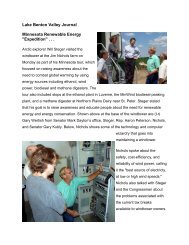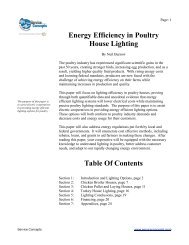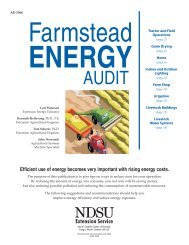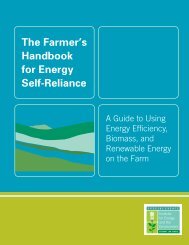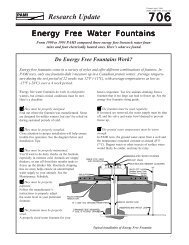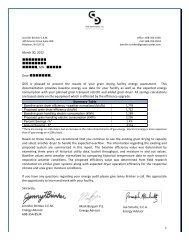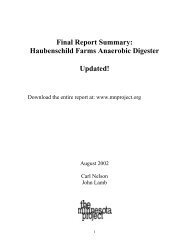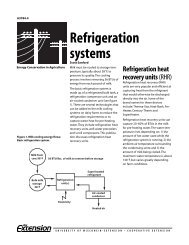Dairy Farm Energy Management Handbook - Wisconsin Department ...
Dairy Farm Energy Management Handbook - Wisconsin Department ...
Dairy Farm Energy Management Handbook - Wisconsin Department ...
You also want an ePaper? Increase the reach of your titles
YUMPU automatically turns print PDFs into web optimized ePapers that Google loves.
Another suggestion is to install a valve on the refrigeration heat recovery unit<br />
drain and use luke warm water on a daily basis for washing down the milk<br />
house or for other chores.<br />
By doing this, you will consistently draw out water from the bottom of the RHR<br />
unit and, again, help reduce any sediment buildup.<br />
Pre-coolers<br />
How much do you spend monthly to cool your milk? On average, a dairy<br />
farmer spends about $75 a month on milk cooling, according to some utilities.<br />
By installing a milk pre-cooler, you can save 20 percent to 30 percent – that’s<br />
$15 to $20 every month.<br />
A pre-cooler will cool milk with well water before it reaches the bulk tank to<br />
provide quick cooling and ensure the quality of the milk you produce. This precooled<br />
milk reduces the demand on your bulk tank compressor—and that<br />
saves you money.<br />
Simple to install and operate, the concept behind an inline pre-cooler is basic:<br />
warm milk is cooled down by well water. The pre-cooler is installed in the milk<br />
discharge line between the receiver and the bulk tank.<br />
The milk in the pre-cooler (heat exchanger) flows one way while the water<br />
flows another – either through a series of tubes inside a shell or through a<br />
series of plates – with neither liquid coming in direct contact with each other.<br />
If the pre-cooler is properly sized and an adequate supply of water is<br />
available, warm milk at 98° F. can be cooled down to about 58° F using an inline<br />
pre-cooler – or to within at least 3° to 4° degrees of the well water<br />
temperature, according to Sanford.<br />
“Overall, pre-coolers can decrease the cooling requirements by up to 65<br />
percent,” he says. “On the energy side, you will likely see a 15 to 30 percent<br />
savings on what your costs were prior to installing a pre-cooler.”<br />
A pre-cooler will operate better if you reduce dirt build-up inside by using a<br />
milk filter in the line during milking and washing. It’s also a good idea to wash<br />
out the filter holder before replacing the filter after each milking and prior to<br />
the washing and cleaning cycle.<br />
Make sure to turn off the well water supply to the pre-cooler during the wash<br />
cycle and drain the water from the pre-cooler prior to washing. Leaving the<br />
pre-cooler water supply on will only cool the wash water and reduce its<br />
effectiveness in cleaning.




